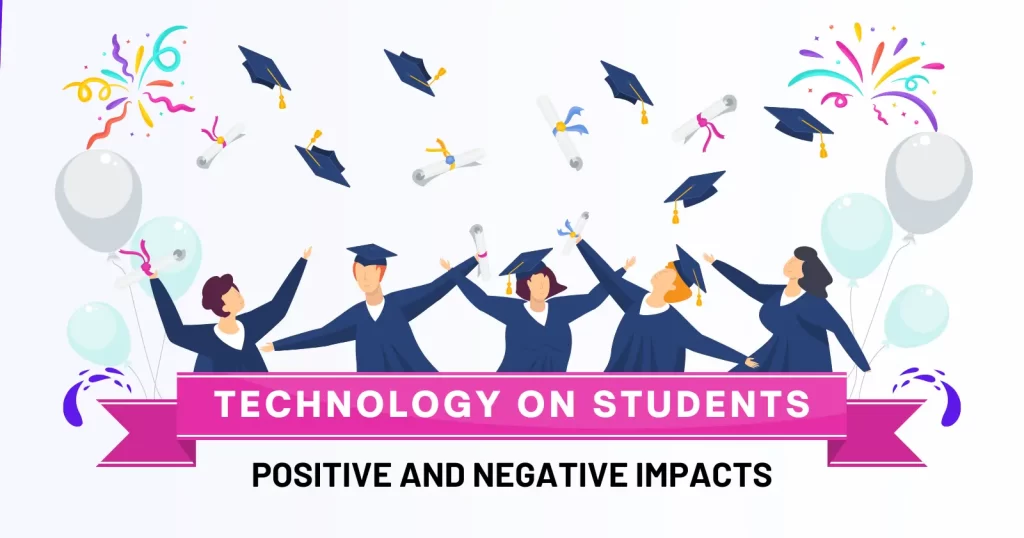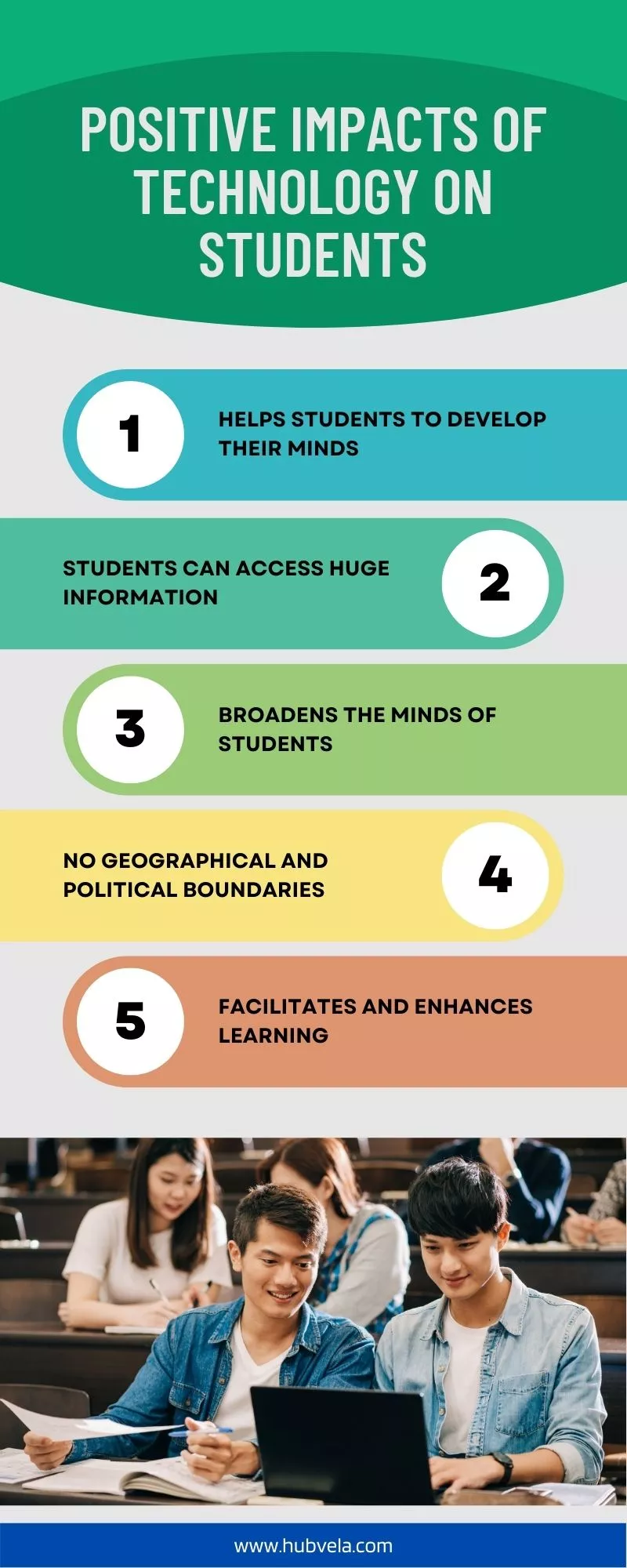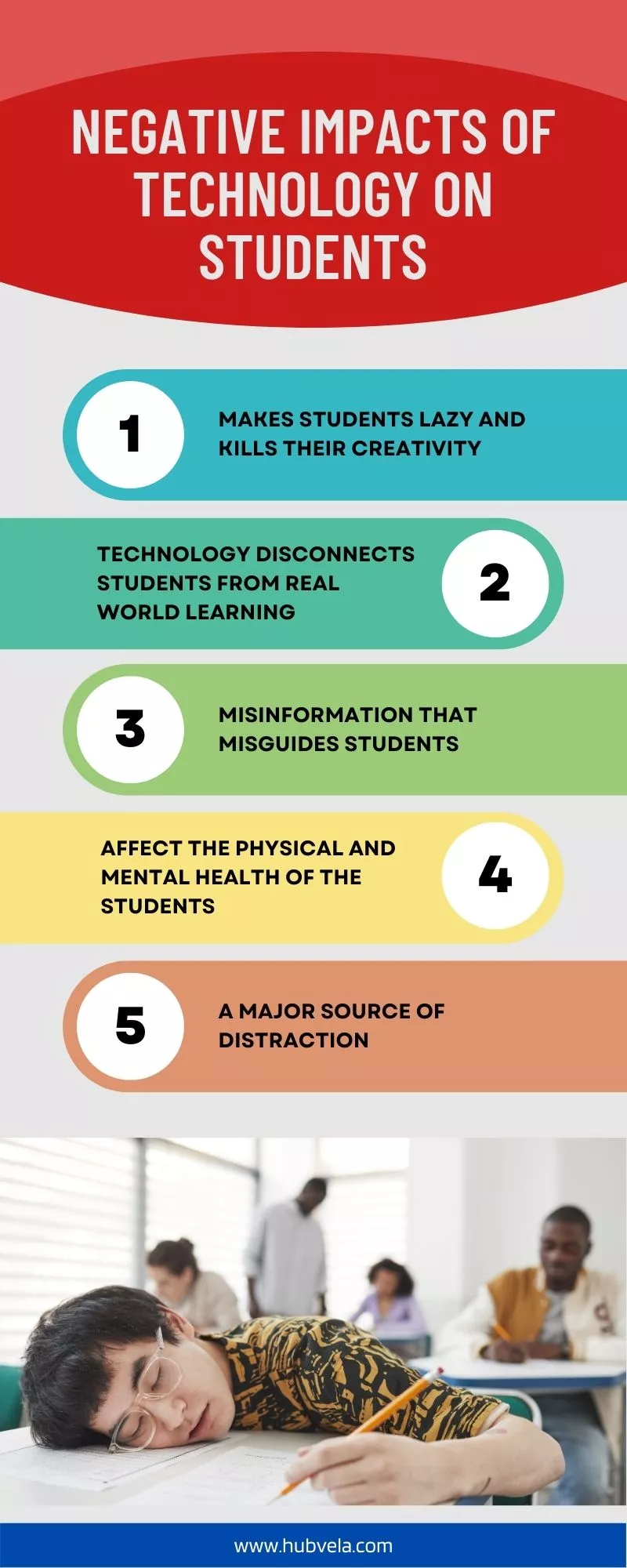Technology has become an integral part of modern education, with students using it for everything from research to communication.
While technology can have many positive effects on students, such as enhancing learning and fostering problem-solving skills, it can also have negative impacts such as decreasing social skills and increasing laziness.
In this article, we will explore both the positive and negative effects of technology on students, drawing on research and expert opinions to provide a comprehensive overview of this important topic.

--Advertisement--
Positive Impacts of Technology on Students
Technology has had a significant impact on education, and it has brought about both positive and negative effects. However, the positive impacts of technology on students are numerous.
Technology has enhanced the learning process of students by making it more engaging and interactive.
It has also helped students to retain more information. One of the key benefits of technology in education is that it brings students together through discussion and collaboration tools, who might never have considered working together before.
Additionally, technology helps children become independent learners more quickly, and they learn the importance of building skills that will help them succeed in their future careers.
Let’s discuss some major positive impacts of technology on students.

1. It helps students to develop their minds
Technology has positive impacts on students by helping them to develop their minds. According to a study conducted by Baytak, Tarman, & Ayas, most students believe that integrating technology into classroom curriculum improves their learning.
Technology can also enhance critical thinking skills depending on the type of technology used. Additionally, technology can create a more engaged environment and encourage active participation in the classroom.
The most significant positive effect of technology on students is that it widely helps and enhances the learning process of students.
Furthermore, technology can diagnose students’ initial learning levels and assign them to appropriate learning materials, which helps in personalized learning.
2. Students can access huge information
One of the positive impacts of technology on students is that it provides them with easy access to a vast amount of information. With search engines and e-books, students can find information quickly and accurately.
This has partially replaced traditional textbooks. Moreover, technology has made it possible for students to get one-on-one help through educational videos and massive open online courses (MOOCs) anytime and anywhere.
Technology also increases interactivity and class engagement, leading to better overall comprehension.
As a result, students are more engaged and often retain more information. Technology in education provides accelerated learning opportunities and fun ways to practice what they learn.
3. Broadens the minds of students
Technology has a positive impact on students by broadening their minds. It enhances learning and comprehension, increases interactivity and class engagement, and causes students to be more engaged, leading to better retention of information.
Technology is essential to a 21st-century education as it brings value to the classroom environment.
Digital technology also allows learners to identify relevant social networks within and surrounding the virtual world that can serve as a resource for their learning.
4. No geographical or political boundaries
The positive impacts of technology on students are not limited by geographical or political boundaries.
Technology can enhance learning experiences and provide access to educational resources regardless of location.
For example, the active use of technology by early learners with adults can positively impact them. A global study found that education technology is associated with higher student outcomes in the United States than in other regions.
While opinions on the impact of technology on politics vary across countries, people generally believe that technology has a positive impact on society.
The internet and information technology have also been shown to have a positive effect on students’ studies.
Overall, technology has the potential to benefit students worldwide and improve their educational outcomes.
5. Facilitates and enhances learning
Technology has a positive impact on student learning by facilitating and enhancing the learning process. Increased interactivity, engagement, and collaboration are some of the ways technology has improved education.
Technology also helps students retain more information and creates a more engaging learning environment.
The use of technology in education has practical benefits such as better time management and combined learning methodologies.
Overall, technology widely helps and enhances the learning process of students.
Negative Impacts of Technology on Students
Technology has become an integral part of modern education, but it also has negative impacts on students.
While technology can provide many benefits, such as easy access to information and improved communication, it can also lead to distractions and negative psychological effects.
Let’s explore the negative impacts of technology on students in more detail.

1. It makes students lazy and kills their creativity
The negative impacts of technology on students include making them lazy and killing their creativity. Students who are always using technology, such as smartphones or computers, may become too reliant on it and not develop unique ideas.
Research has shown that technology can also deteriorate students’ reading and writing skills. While some schools have banned certain technologies or attempted to teach responsible use, others argue that limiting internet access can impair student creativity.
Therefore, it is important for students to balance their use of technology with other activities that promote creativity and critical thinking.
2. Technology Disconnects Students from Real-World Learning
Technology can have negative impacts on students, including disconnecting them from real-world learning.
Research has shown that technology can deteriorate students’ reading and writing skills, which are essential for real-world communication.
Additionally, technology use can cause social and behavioral problems in children because it minimizes the amount of time kids spend interacting with others.
While technology can be beneficial in the classroom, it is important to ensure that students are not overly reliant on it and that they continue to develop essential skills for real-world learning and communication.
3. Misinformation that misguides students
Misinformation can be a negative impact of technology on students. Misinformation is incorrect or misleading information that can misguide students and affect their learning.
With the abundance of information available online, it can be difficult for students to distinguish between accurate and inaccurate information.
This can lead to confusion, and misunderstandings, and ultimately affect their academic performance.
Additionally, digital technology has made education a commodity, and students view it as a means to an end rather than an opportunity for personal growth and development.
Therefore, it is important for educators to teach students how to evaluate sources critically and identify misinformation in order to avoid its negative impacts on their learning.
4. Affect the Physical and Mental Health of the Students
Technology can have negative impacts on the physical and mental health of students. Excessive use of technology can lead to eyestrain, difficulty focusing on important tasks, and other physical issues.
It can also affect mental health by causing anxiety, depression, addiction, and behavioral problems.
The increased presence of technology in students’ lives has made it important to understand how it affects their mental health.
Educators also face challenges due to the negative impacts of technology on student learning and physical health.
Therefore, it is essential to monitor and limit the use of technology among students to prevent these negative effects.
5. A significant source of distraction
The use of laptops, cell phones, and other digital devices in the classroom can negatively impact students’ concentration and ability to learn.
Students who are exposed to a large amount of screen time may also experience adverse health effects.
While technology can have benefits in education, such as providing access to information and facilitating communication, it is important for educators to be aware of its potential negative impacts on student learning and well-being.
Conclusion on the Positive and Negative Impacts of Technology on Students
In conclusion, technology has both positive and negative impacts on students. The positive effects include enhancing the learning process, increasing engagement, and improving retention of information.
However, there are also negative effects such as over-reliance on technology leading to less time spent on actual learning. It is important for educators and parents to find a balance between utilizing technology to enhance education while also being mindful of its potential drawbacks.
Ultimately, the key is to use technology in a way that maximizes its benefits while minimizing its negative impacts.



Nice One for the info and update
It’s so helpful to all . Please provide to us such kind of important things to acquire knowledge .
Thank you for the appreciation and comment, we continuously write on such topics and post daily. Keep visiting and reading.
Please give me some question about it?
Please explain, what type of question you need?
below are some of the questions related to the topic:
Positive Impacts:
1. How has technology improved your access to academic information?
2. In what ways has technology enhanced student communication and collaboration?
3. Can you give examples of how technology has made learning more engaging for you?
4. How has technology helped you develop skills relevant to your education and future career?
5. Have you noticed improvements in time management and productivity due to technology?
Negative Impacts:
1. How does technology act as a distraction in your academic life, and how do you manage it?
2. Have you experienced negative effects on your mental health from excessive screen time or social media?
3. In what ways has technology contributed to issues like plagiarism or cheating in your academic environment?
4. Do you feel technology has affected face-to-face communication skills among students?
5. Have you faced challenges with the accessibility or affordability of technology in education?
Overall Impact:
1. How do you balance the positive and negative aspects of technology in your academic routine?
2. Can you foresee future changes in educational technology impacting students positively or negatively?
3. Should the education system adapt to incorporate more or less technology, in your opinion?
4. How can educators and students work together to maximize positive impacts while minimizing negatives?
5. What advice would you give to peers on using technology responsibly for academic success?
It was so helpful.
Cz, I have to tell some sentence about impacts of technology on students in my classroom. Today, I will tell some sentence like this. It’s not copy paste. I will just take some ideas. Thank you. 😊
The most important part of English learning is the sagacity of free hand writing. Students should develop their aptitude in free hand writing to be a best writer🙂🖊️🖋️